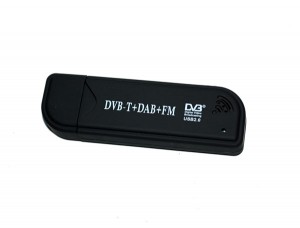 In response to our post on inexpensive SDRs based on the RTL2832U, Jeff Benedict writes:
In response to our post on inexpensive SDRs based on the RTL2832U, Jeff Benedict writes:
Here’s a website that has a lot of info on cheap SDR gear. They have a write-up on an external board which adds HF capabilities. I have one but haven’t done anything with it yet.
http://www.hamradioscience.com
Jeff KB7AIL CN88
Thanks, Jeff! Has anyone tried HF with any success? I’m curious how well this über-cheap receiver will cope with adjacent signals and blowtorch stations within the HF spectrum.
Meanwhile Neil, blogger on Fofio, commented:
I have an RTL-SDR system up and running. I have done 2 demonstrations for my local Ham Radio club. One on the basic setup and use of the dongle, using both SDR# and HDSDR. The other presentation showed the remote receiver capability using a Raspberry Pi as the receiver with the dongle attached and a remote SDR# computer decoding the stream over a network connection. Once I compensate for some minor frequency discrepancies it’s a pretty good receiver. The only issue I have noticed with mine (one of the early E4000-based models) is a tendency to overload in the presence of a strong signal. We have a pretty powerful 2 Meter repeater less than a 1/4 mile from our home, and when it’s active it causes some strange results with the RTL-SDR setup.
I have yet to try one of the HF converters they make for these. I hope to do that soon.
Another project I was reading about today that I may try out is using 2 of the dongles at once to create a trunk-tracker scanner.
Wow! Two $20 USB SDRs and a little PC magic could yield a trunking scanner? I want to hear more about this. Trunking scanners tend to be both expensive and complicated. If a web-updated database could be downloaded and used to control this sort of rig, the possibilities would be most impressive!
Neil, keep us informed!

How does HF work with an upconverter? Great! As I write this I am listening to the 31 meter band with my RTLSDR and hf upconverter. I am using a magnetic loop antenna, its a very simple loop around 1 meter in diameter, a loop of thick wire in series with a variable capacitor, and for coupling to the radio, I have a length of coax terminated with a six inch piece of wire wrapped five times around a toroid core, going between the coax center and shield, the loop wire goes through the center of the toroid core. This kind of coupling works really quite well. One benefit of the magnetic loop is that it is a preselector, also it reduces noise dramatically, also, its directional, so I can rotate it for the least noise or best signal. The combination of rtl-sdr, upconverter, and magnetic loop is a very good one for apartment dwellers. The radio setup is also very small. It fits inside of a small altoids tin.
These rtl-sdrs are very inexpensive. For anybody who already has a computer, its a no-brainer, the rtl-sdr is literally the most fun $20 purchase I’ve ever spent.
The dongles that use the RTL2832 and R820T chip are even cheaper. Another benefit of the RTL-SDR is the opportunity to learn DSP and software defined radio using Gnuradio.
It wasn’t long ago that owning a software defined radio cost many hundreds of dollars. Now somebody can own one for $10. That’s quite a big change! And they are so very small. (for an example, see http://www.adafruit.com/products/1497 )
The drivers and a list of compatible software are at http://sdr.osmocom.org/trac/wiki/rtl-sdr
There is now a Gnuradio LiveDVD which offers a bootable Linux environment so people can try out Gnuradio with an rtlsdr, USRP or hackrf SDR. It seems as if these RTLSDRs are getting a lot of people interested in radio who would not have had access to the world of software defined radio before. (And yes, you can use it as a trunked scanner, see http://rachelbythebay.com/w/2012/05/17/slowboat/ )
The chips in these dongles are intended for low-noise/low-signal environments. Their dynamic range is quite limited by their 12- or 14-bit ADCs. An 1mV input signal might overpower them. Nevertheless their possibilities are amazing.
But as soon as you use them on lower frequencies insert an variable attenuator! At least one of the popular up-converters does the opposite and amplifies the input.
Here are some links to RTL-SDR trunking info:
http://www.rtl-sdr.com/using-unitrunker-with-sdrsharp/
http://public-xrp.s3.amazonaws.com/docs/sdrsharptrunk.htm